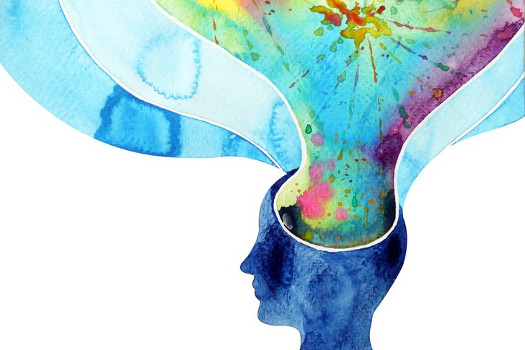Mental Illness Is Far More "Normal" Than We Think
I used to teach a course in "abnormal psychology," and students were often amazed by the high rates of mental illness. The best studies at that time (around 2015) were based on large, randomly selected cross-sections of the population. The study designs were retrospective—literally "looking backward"—as the research interviewers asked participants a series of detailed questions about their entire mental health history.
Pathologizing Sadness?
The numbers that emerged from these retrospective reports shocked many people. About a third of the sample had experienced a mental health condition in the past twelve months, and nearly half had at some point in their lifetime. Many of my students wondered if the threshold for diagnoses were too low—after all, shouldn’t "abnormal" psychology be relatively rare? It was easy to wonder if the boundaries of mental illness were being stretched to include relatively mild experiences of difficult emotions.
I recently discussed these issues on the Think Act Be podcast with Dr. Jonathan Schaefer, a clinical psychologist and research scientist at the University of Minnesota. Are we pathologizing everyday sadness and anxiety? Schaefer doesn’t think so.
"I don’t buy the argument that if lifetime prevalence is high for mental disorders, it must mean we’re medicalizing normality," he said. "We don’t apply that kind of logic to physical health problems." He used the example of a common illness like the flu. "Lots of people will get the flu," Schaefer explained, "but that doesn’t mean that diagnosing and treating that condition is ‘medicalizing normality.’"
Uninterrupted Mental Health Isn’t Normal
Schaefer is on firm ground when he compares common mental health conditions like depression to physical ailments like the flu. He and his colleagues have shown that results from previous studies were almost certainly underestimates of the lifetime prevalence of mental illness. The actual number is closer to 83 percent; a full five out of six people in Schaefer’s research met the criteria for a mental health diagnosis by age 38. (Schaefer and I are both among the 83 percent.)
Schaefer’s data come from an ongoing longitudinal cohort study in Dunedin, New Zealand. Researchers have been following about 1000 participants since birth, and administering repeated psychiatric assessments. The most common conditions in the Dunedin sample were anxiety disorders (58 percent of the sample), major depression (48 percent), and substance abuse or dependence (41 percent).
Why had retrospective studies undercounted mental illness? Schaefer blamed it on “recall failure”: Participants simply forgot that they had had a certain condition. With serious physical health conditions, like heart disease or diabetes, we’ll almost certainly remember our diagnosis. But for mental health conditions, “we know that recall failure happens incredibly frequently,” said Schaefer.
He attributes forgetting to state-dependent memory. "People tend to view their past experiences through the lens of their present circumstances," he explained. If we’re in a good mood, it’s harder to remember the times when we were feeling down, and we’re likely to think they weren’t as bad as they actually were.
Schaefer and colleagues’ longitudinal cohort study, in contrast, minimized the threat of recall failure, since participants needed to remember only the year since the last assessment and not their entire life history.
State vs. Lifetime History
Schaefer’s study was published in the Journal of Abnormal Psychology, which struck me as a bit ironic, given how normal it is to experience a mental health condition at some point in one’s life. But Schaefer clearly distinguishes between what’s normal for a lifetime and what’s normal for our day-to-day experience.
"It’s important to think about the lens we’re adopting, and whether we’re looking across lifespans or within lifespans," he explained. "When we’re talking about what is ‘normal,’ this is a lifetime perspective. It’s saying that the average life has at least one period of diagnosable mental illness in it." From that perspective, mental illness is a very normal experience.
"But you can also look within a person’s life across people," he continued, "and say that the average mental health state for people is to not be in a state of diagnosable disorder." We apply the same way of thinking to physical health conditions, since "the average state of health for most human beings is to not be experiencing a cold or the flu." Thankfully the mental health struggles that most of us face will be temporary—"sort of like wave," as Schaefer described them. "They surge, they crest, and then for most people they recede."
Seth J. Gillihan, Ph.D., is a licensed psychologist. He offers online courses in mindfulness-centered cognitive behavioral therapy (CBT).





